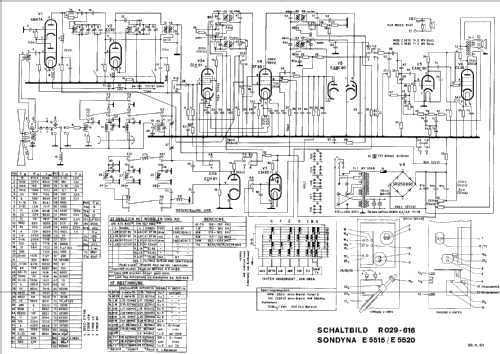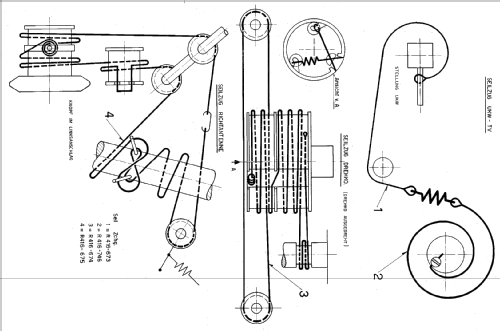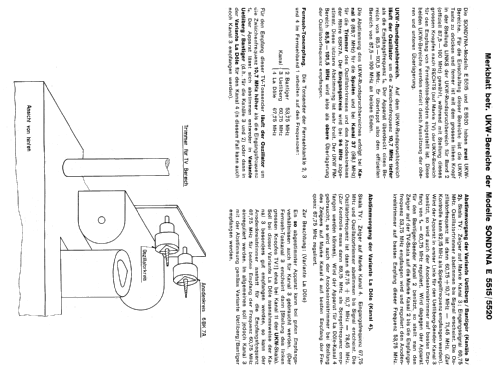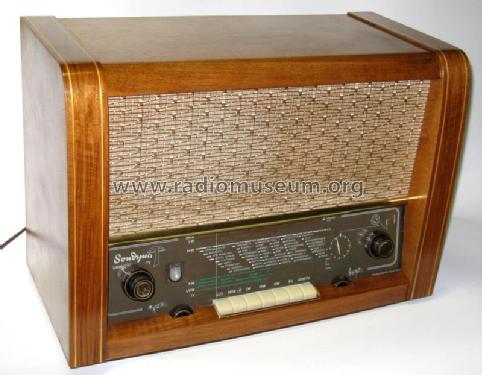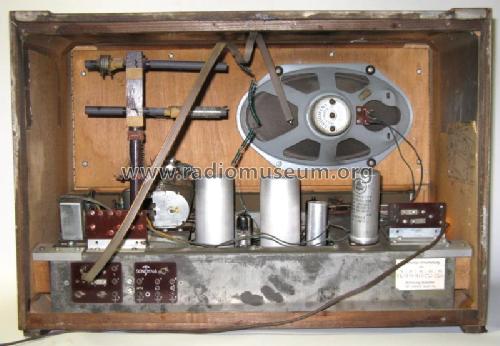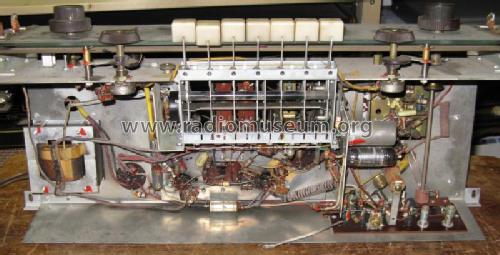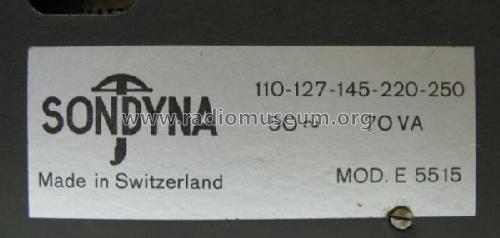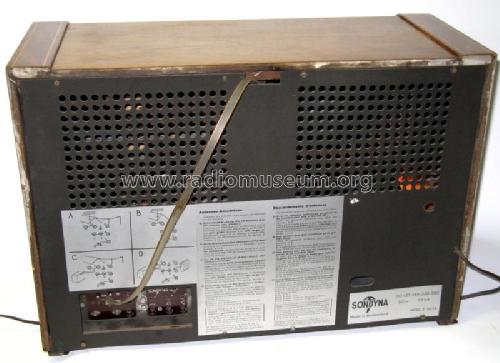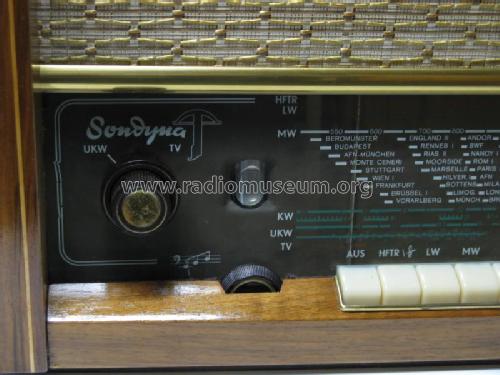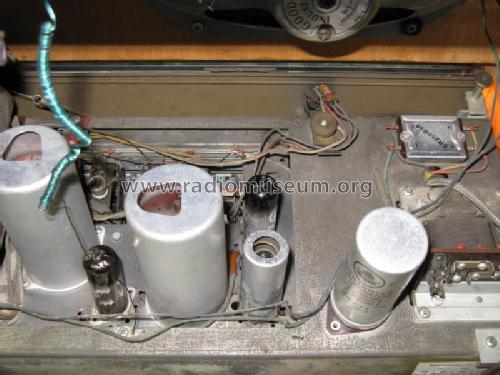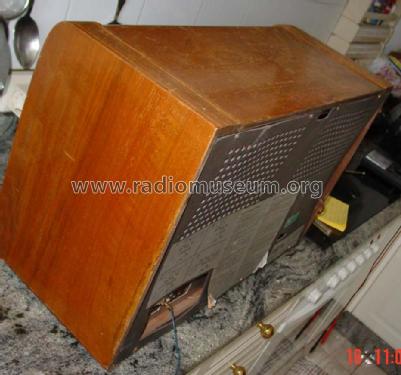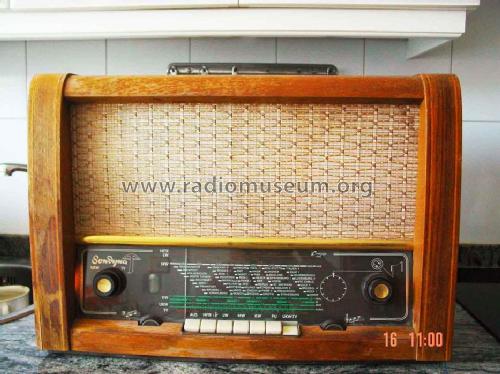Resonar RE5515 Ch= E5515
Sondyna AG; Zürich-Effretikon
- País
- Suiza
- Fabricante / Marca
- Sondyna AG; Zürich-Effretikon
- Año
- 1954/1955
- Categoría
- Radio - o Sintonizador pasado WW2
- Radiomuseum.org ID
- 70551
Haga clic en la miniatura esquemática para solicitarlo como documento gratuito.
- Numero de valvulas
- 7
- Numero de transistores
- Semiconductores
- SR250B90
- Principio principal
- Superheterodino en general; ZF/IF 470/10700 kHz
- Número de circuitos sintonía
- 6 Circuíto(s) AM 9 Circuíto(s) FM
- Gama de ondas
- OM, OL, OC y FM
- Especialidades
- Wired Wireless Receiver (RF!)
- Tensión de funcionamiento
- Red: Corriente alterna (CA, Inglés = AC) / 110; 127; 145; 220; 250 Volt
- Altavoz
- Altavoz elíptico de imán permanente.
- Material
- Madera
- de Radiomuseum.org
- Modelo: Resonar RE5515 Ch= E5515 - Sondyna AG; Zürich-Effretikon
- Forma
- Sobremesa de botonera.
- Ancho, altura, profundidad
- 560 x 385 x 275 mm / 22 x 15.2 x 10.8 inch
- Anotaciones
-
7 Drucktasten, 2 Doppeldrehknöpfe, drehbare Peilantenne.
UKW (85,5 - 101,5 MHz) umschaltbar auf Fernsehtonempfang für Kanäle 2 & 3 (53,75 - 60,75 MHz) oder 3 & 4 (60,75 - 67,75 MHz), Cascode-Eingangsstufe (6BK7A).
Siehe auch Modell RE5520, welches jedoch 2 Lautsprecher aufweist.
- Ext. procedencia de los datos
- Lutwin Berndt
- Procedencia de los datos
- Radiokatalog Band 2, Ernst Erb
- Documentación / Esquemas (1)
- -- Original-techn. papers.
- Autor
- Modelo creado por Iven Müller. Ver en "Modificar Ficha" los participantes posteriores.
- Otros modelos
-
Donde encontrará 177 modelos, 112 con imágenes y 115 con esquemas.
Ir al listado general de Sondyna AG; Zürich-Effretikon
Colecciones
El modelo Resonar es parte de las colecciones de los siguientes miembros.
Contribuciones en el Foro acerca de este modelo: Sondyna AG; Zürich-: Resonar RE5515 Ch= E5515
Hilos: 1 | Mensajes: 2
Bei diesem Gerät (S/N 71380) ging der Oszillator auf KW nicht. Die Röhrenmessung ergab für die ECH81 einen Anodenstrom von 99% (6.45 mA) vom Sollwert (6.5 mA) und eine Steilheit von 1.9 mA/V (Sollwert 2.2 mA/V). So war ich zuversichtlich, dass der Fehler nicht an der Röhre liegen könne. Nachdem die Peripherie keinen offensichtlichen Fehler zeigte, wechselte ich probehalber gegen eine schlechtere Röhre mit Anodenstrom 73% (4.75mA) vom Sollwert und einer Steilheit von 1.4 mA/V. Damit läuft das Gerät auch auf KW.
Wieso ein Oszillator mit "schlechterer" Röhre schwingt und mit "guter" Röhre nicht, ist mir nicht ganz klar.
Anexos
- Gute-ECH81-kann-aber-KW-nicht (25 KB)
- Schlechte-ECH81-kann-aber-KW (25 KB)
Nicolin Salis, 11.Oct.21
